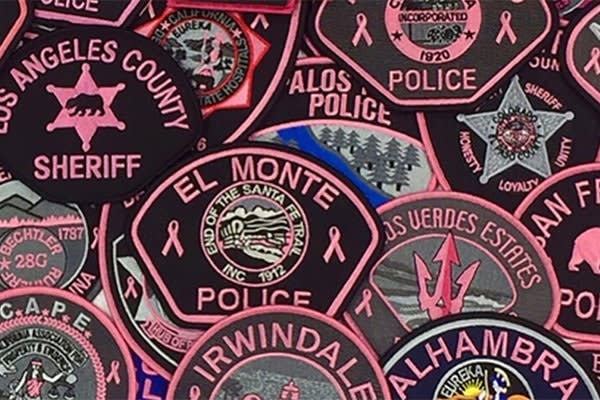Earlier this week, we reported that officers with an estimated 450 departments nationwide will wear pink uniform patches during the month of October in an effort to raise awareness of the disease and money for breast cancer research and treatment.
Those officers will be sporting specially made uniform patches as part of Breast Cancer Awareness Month in an initiative driven by an organization called the Pink Patch Project, a public awareness campaign designed to bring attention to the fight against breast cancer and to support breast cancer research organizations in combating this devastating disease.













